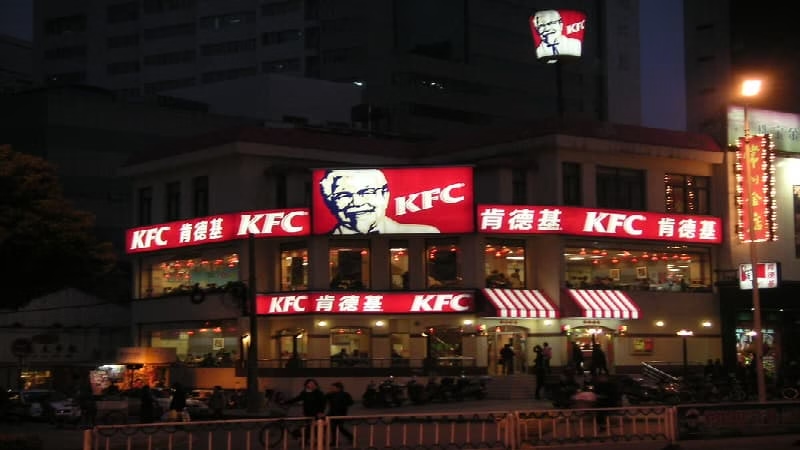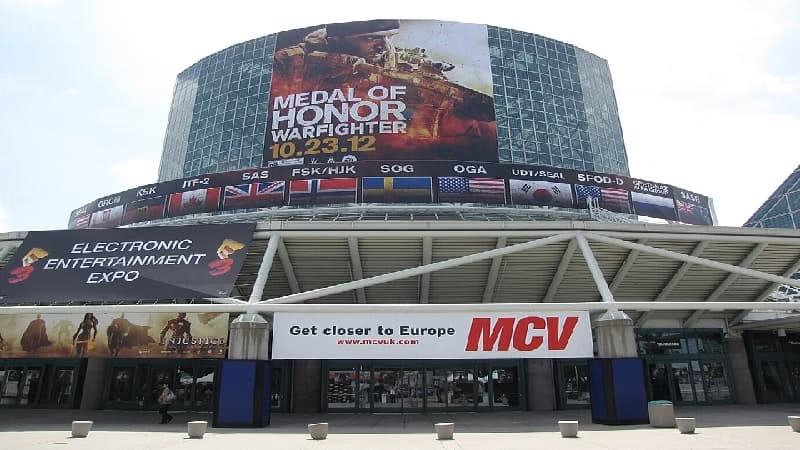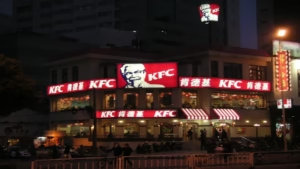How to Select LED Signage for Outdoor Marketing: Complete Guide & Tips
Table of Contents
LED signage for outdoor marketing has become a key tool for modern businesses, providing high-visibility visuals to engage audiences effectively. Choosing the right outdoor LED display can be challenging due to factors like brightness, installation, weather resistance, and maintenance.
This guide offers practical tips on selecting, installing, and maintaining LED signage for outdoor marketing, helping businesses avoid common mistakes and ensure long-lasting, impactful results.
1.Understanding the Components of LED Signage for Outdoor Marketing
Outdoor LED signage is more than just a screen—it is a complete system made up of several critical components that ensure high performance, durability, and visual impact. Understanding these parts helps businesses make informed decisions when selecting the right display for their advertising needs.
Display Modules and Pixel Pitch
The display unit, made up of LED modules, determines image quality and clarity. Different pixel densities and pixel pitch affect how sharp the visuals appear, especially at various viewing distances. Choosing the right outdoor LED modules with different pixel pitches ensures your display delivers sharp visuals at varying viewing distances.
Control System and Content Management System
The control system manages how content is displayed on the LED signage. Modern systems offer synchronous and asynchronous control, cloud-based management, and remote scheduling. A robust CMS supports multiple file formats, layouts, and animation capabilities to ensure flexible and dynamic advertising.
Power Modules and Heat Management
Reliable power supply is essential for outdoor LED signage. Stabilized power units, redundant power sources, and well-designed heat dissipation paths prevent system failures and extend the lifespan of the display.
Installation Structure and Support Framework
Proper mounting options—wall-mounted, pole-mounted, hanging, or rooftop—are critical for safety and stability. Structures must withstand wind, vibrations, and seismic activity. Following a detailed installation guide for outdoor LED screens helps prevent common setup issues and ensures structural stability.
Enclosure and Protection Design
The enclosure protects the LED signage from environmental factors. IP65 or higher is recommended for outdoor applications to resist dust, water, and corrosion. Materials used in the casing contribute to durability and long-term reliability in harsh conditions.
2. Key Selection Factors for LED Signage for Outdoor Marketing


Choosing the right LED signage requires careful consideration of performance and durability factors.
Brightness and Display Intensity
Brightness affects visibility in various lighting conditions. Displays must be bright enough for clear daytime viewing while remaining comfortable at night. Brightness is measured in nits or cd/m². For understanding cost-performance balance, reviewing outdoor LED screens price and specs can guide decisions.
Pixel Density and Viewing Distance
Pixel density should match the intended viewing distance. Large displays for distant viewing require lower pixel density; smaller, close-range screens need finer pitch. Matching pixel pitch to viewing distance ensures optimal image clarity.
Protection and Weather Resistance
Outdoor LED signage must withstand harsh conditions. Look for appropriate IP ratings, usually IP65 or higher. Materials should resist temperature fluctuations, UV exposure, and other weathering effects to maintain performance.
Energy Efficiency and Heat Management
Energy-efficient signage reduces operational costs and prolongs system life. Features like automatic brightness adjustment and power-saving controls minimize energy use. Proper heat management ensures stable performance.
Maintenance and Replaceability
Modular designs simplify maintenance and reduce downtime. Front or rear maintenance options allow quick repairs. For practical strategies, see maintenance practices for outdoor LED screens.
Brand Reputation and After-Sales Support
Selecting a reputable manufacturer ensures quality and reliable service. Consider warranty periods, availability of spare parts, and global service networks. Strong after-sales support protects investment and ensures consistent performance.
3. Installation Guidelines and Environmental Considerations
Proper installation and environmental assessment are crucial for long-term performance and safety.
Site Assessment and Environmental Analysis
Evaluate sunlight exposure, wind, terrain, and potential obstructions. Compliance with local building codes and safety regulations is essential.
Choosing the Right Installation Method
Installation can be wall-mounted, pole-mounted, hanging, or rooftop. Select method based on size, weight, and viewing distance.
Cabling and Power Setup
Plan power cable routing, grounding, and redundancy to ensure stable operation.
Ventilation and Heat Management
Design airflow paths and spacing for effective heat dissipation.
Safety Standards and Inspection
Ensure structural stability, proper anchoring, and conduct post-installation inspections.
4. Common Mistakes to Avoid with LED Signage for Outdoor Marketing
Choosing Insufficient Brightness
Low-brightness displays are unreadable in sunlight.
Using a Low IP-Rated Display
Insufficient ingress protection may lead to water damage.
Non-Modular Design
Maintenance becomes complex and time-consuming.
Neglecting Structural and Wind Load
Poor anchoring creates safety hazards.
Overlooking Heat Dissipation Design
Poor ventilation shortens lifespan.
5. Maintenance and Longevity Strategies
Neglecting Structural and Wind Load
Poor anchoring creates safety hazards.
Overlooking Heat Dissipation Design
Poor ventilation shortens lifespan.
Maintenance and Longevity Strategies
Regular Cleaning and Dust Protection
Keep displays free from dust to maintain brightness and airflow.
Periodic Inspection and Module Calibration
Inspect modules and calibrate for consistent brightness.
Software Updates and CMS Maintenance
Update systems to ensure optimal performance.
Replacement and Spare Parts Management
Maintain spare modules. Refer to LED screen for outdoor advertising for guidance on replacing and upgrading components.
Performance Monitoring and Alert Systems
Use monitoring systems to detect anomalies early.
6. Conclusion
Selecting the right LED signage involves considering components, brightness, protection, maintenance, and brand reputation. Working with an experienced manufacturer ensures quality, professional installation, and reliable support.
For a high-quality, dependable solution, explore UnifyLED’s LED screen for outdoor advertising products, request a custom solution, or get a quote.
7. FAQS
High-brightness displays remain readable even in direct sunlight.
IP65 is suitable for most environments; IP67 is better for extremely wet or harsh conditions.
Match pixel pitch to viewing distance for optimal clarity.
Well-maintained displays can last 8–10 years or longer.
8. Recommend

Unify LED Ehonor Series: Gucci UK LED Screens Collaboration
Discover how Unify LED’s high-end indoor LED screen Ehonor series powers Gucci UK’s immersive luxury retail displays.

LED Screen Maintenance Tips – Indoor & Outdoor Display Care Guide 2025
Essential LED screen maintenance tips for indoor and outdoor displays to extend lifespan, maintain brightness, and prevent failures.

How to Select LED Signage for Outdoor Marketing: Complete Guide & Tips
Complete guide to selecting outdoor LED signage for marketing. Learn installation tips, durability, maintenance, and avoid common mistakes.
